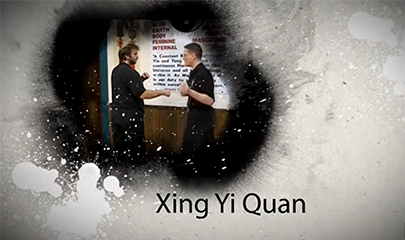-
×
 Tantra for One: Diving Into Self-Pleasure Rituals By Nathanel Goldman
1 × $5,00
Tantra for One: Diving Into Self-Pleasure Rituals By Nathanel Goldman
1 × $5,00 -
×
 Daygame Mastery - Mastery Package By Justin Marc
1 × $179,00
Daygame Mastery - Mastery Package By Justin Marc
1 × $179,00 -
×
 Cognomovement An Energy Healing System With Bill McKenna and Liz Larson - The Shift Network
1 × $46,00
Cognomovement An Energy Healing System With Bill McKenna and Liz Larson - The Shift Network
1 × $46,00 -
×
 Corporate Restructuring By Wall Street Prep
1 × $85,00
Corporate Restructuring By Wall Street Prep
1 × $85,00 -
×
 Excel And VBA 2024 By Breaking Into Wall Street
1 × $46,00
Excel And VBA 2024 By Breaking Into Wall Street
1 × $46,00
Sil Lim Tao Form – Part 1/4 – Learning The Form By Lamar Davis
$20,00 $8,00
SKU: KOB.54852cv093k
Category: Martial Arts
Tags: Lamar Davis, Learning The Form, Part 1/4, Sil Lim Tao Form
Sil Lim Tao Form – Part 1/4 – Learning the Form by Lamar Davis – Digital Download!
Let’s embark on a captivating adventure to uncover remarkable insights that spark your curiosity and elevate your understanding

Sil Lim Tao Form – Part 1/4 – Learning The Form By Lamar Davis
Overview

Sil Lim Tao Form – Part 1/4 – Learning the Form by Lamar Davis
Martial arts is a canvas painted with layers of technique, philosophy, and tradition, and at the heart of this intricate tapestry lies the Sil Lim Tao form. This foundational form in Wing Chun, a martial art with deep philosophical roots, serves not just as a series of movements but as a pathway to personal growth and mastery in martial arts. In Sil Lim Tao Form – Part 1/4 – Learning the Form, Sifu Lamar M. Davis II offers an invaluable exploration into the nuances of this art. Drawing from the legacy of Bruce Lee and the teachings at the Seattle Gung Fu Institute, Davis breaks down the complexities of the form into digestible segments, allowing both novice and experienced practitioners to embark on a journey toward enlightenment through movement.
The Significance of the Sil Lim Tao Form
The Sil Lim Tao form is not merely an introductory practice; it is the very essence of Wing Chun itself, serving as the foundation upon which practitioners build their skills. Understanding its significance goes beyond physical movements; it’s a matter of grasping the underlying principles that shape one’s martial arts journey. Much like learning the alphabet before writing a novel, mastering this form opens the door to higher-level techniques and the philosophical insights of Wing Chun.
Historical Context
The historical backdrop of Wing Chun and the Sil Lim Tao form is rich and layered. Originally developed in Southern China, Wing Chun was designed as a practical self-defense system tailored for close-quarters combat, especially relevant for individuals of smaller stature. This was reflected in the design of the Sil Lim Tao, which emphasizes efficiency and power generation through structure and alignment rather than brute strength. Sifu Davis outlines these elements clearly, ensuring that viewers understand the purpose behind each movement.
Comparison with Other Forms
In contrast to other martial arts forms, the Sil Lim Tao serves as an introspective journey focused on building core skills such as stability, balance, and relaxation. For instance, the Tai Chi form is widely known for its flowing movements aimed at promoting health and tranquility, while the Kata in Karate emphasizes a combination of stances and strikes.
Here’s a comparative breakdown of key forms:
| Martial Art | Primary Focus | Key Characteristics |
| Wing Chun | Close-quarters combat | Economy of motion |
| Tai Chi | Health and self-cultivation | Fluid movements |
| Karate | Striking and defense | Strong stances and techniques |
This comparative approach not only highlights the unique aspects of the Sil Lim Tao but also underscores its fundamental role in broader martial arts practice.
Breakdown of the Instructional Video
Overview of Content
Sifu Davis approaches the Sil Lim Tao with meticulous attention to detail. He divides the instructional content into manageable sections that focus on specific movements, giving nuanced explanations for each. Initially, viewers might be struck by the detailed analysis of postures and transitions. The clarity of instruction is paramount, particularly for those who find the intricacies of Wing Chun intimidating.
Key sections covered include:
- Stance and Structure: How to position the body for optimal balance and power.
- Basic Movements: Introduction to fundamental hand techniques, footwork, and body alignment.
- Underlying Principles: Insight into the philosophy of Wing Chun that informs the practice.
Visual Clarity and Production Quality
While the video retains a certain nostalgia from its VHS origins, it showcases a thoughtful approach to visual clarity. The static and visual artifacts typical of older formats can be distracting yet also offer a sense of authenticity. Sifu Davis compensates for these quirks with strong visual demonstrations and focused explanations. The running time of approximately 48 minutes is structured effectively, providing a comprehensive yet concise introduction to the Sil Lim Tao.
The clear, organized layout of the instructional material makes it accessible to participants with varying levels of experience. By emphasizing daily practice, Davis advocates for habitual training that fosters muscle memory and deeper understanding over time. This daily commitment echoes the wisdom found in many classical martial arts philosophies, underscoring the principle that mastery comes through persistence.
Principles of Practice and Commitment
Daily Training Importance
Sifu Davis encourages a philosophy akin to cultivating a garden; regular attention and care yield flourishing results. In martial arts, consistent practice is critical for embodying the principles and movements inherent to the Sil Lim Tao. Each repetition serves as a building block, constructing not just physical prowess but also mental clarity and discipline.
Benefits of Daily Practice:
- Enhanced muscle memory and fluidity of movements.
- Greater understanding of the philosophical principles behind the form.
- Increased physical fitness and mental discipline.
Emotional and Psychological Impact
Beyond physical training, the Sil Lim Tao serves as a platform for personal development. Practitioners often find themselves navigating challenges that extend beyond the dojo. The discipline required to master this form can lead to improved focus and resilience in other aspects of life. Sifu Davis encapsulates this sentiment beautifully, expressing that the journey through the Sil Lim Tao is as much an internal exploration as it is an external one.
Much like art, where the emotion of the artist is transformed into a tangible form, the practice of Sil Lim Tao channels the practitioner’s inner world into disciplined motion. It’s a dance of self-discovery, each movement reflecting the practitioner’s state of mind and emotional landscape.
Conclusion
In Sil Lim Tao Form – Part 1/4 – Learning the Form, Sifu Lamar M. Davis II masterfully guides viewers through the foundational steps of Wing Chun, emphasizing the significance and depth of the Sil Lim Tao. This instructional video not only serves as a tool for technical mastery but also as an invitation to explore the profound philosophies inherent in martial arts practice. Future sections promise to build upon this foundation, continuing to unveil the beauty and complexity of the Wing Chun system.
The form is more than just a collection of movements; it’s a journey through time, culture, and personal development, reminding practitioners that in the realm of martial arts, every step taken is a brushstroke on the canvas of their unique story.
Frequently Asked Questions:
Innovation in Business Models: We use a group purchase approach that enables users to split expenses and get discounted access to well-liked courses. Despite worries regarding distribution strategies from content creators, this strategy helps people with low incomes.
Legal Aspects to Take into Account: Our operations’ legality entails several intricate considerations. There are no explicit resale restrictions mentioned at the time of purchase, even though we do not have the course developers’ express consent to redistribute their content. This uncertainty gives us the chance to offer reasonably priced instructional materials.
Quality Control: We make certain that every course resource we buy is the exact same as what the authors themselves provide. It’s crucial to realize, nevertheless, that we are not authorized suppliers. Therefore, the following are not included in our offerings: – Live coaching sessions or calls with the course author.
– Entry to groups or portals that are only available to authors.
– Participation in closed forums.
– Straightforward email assistance from the writer or their group.
Our goal is to lower the barrier to education by providing these courses on our own, without the official channels’ premium services. We value your comprehension of our distinct methodology.
Be the first to review “Sil Lim Tao Form – Part 1/4 – Learning The Form By Lamar Davis” Cancel reply
You must be logged in to post a review.



















Reviews
There are no reviews yet.